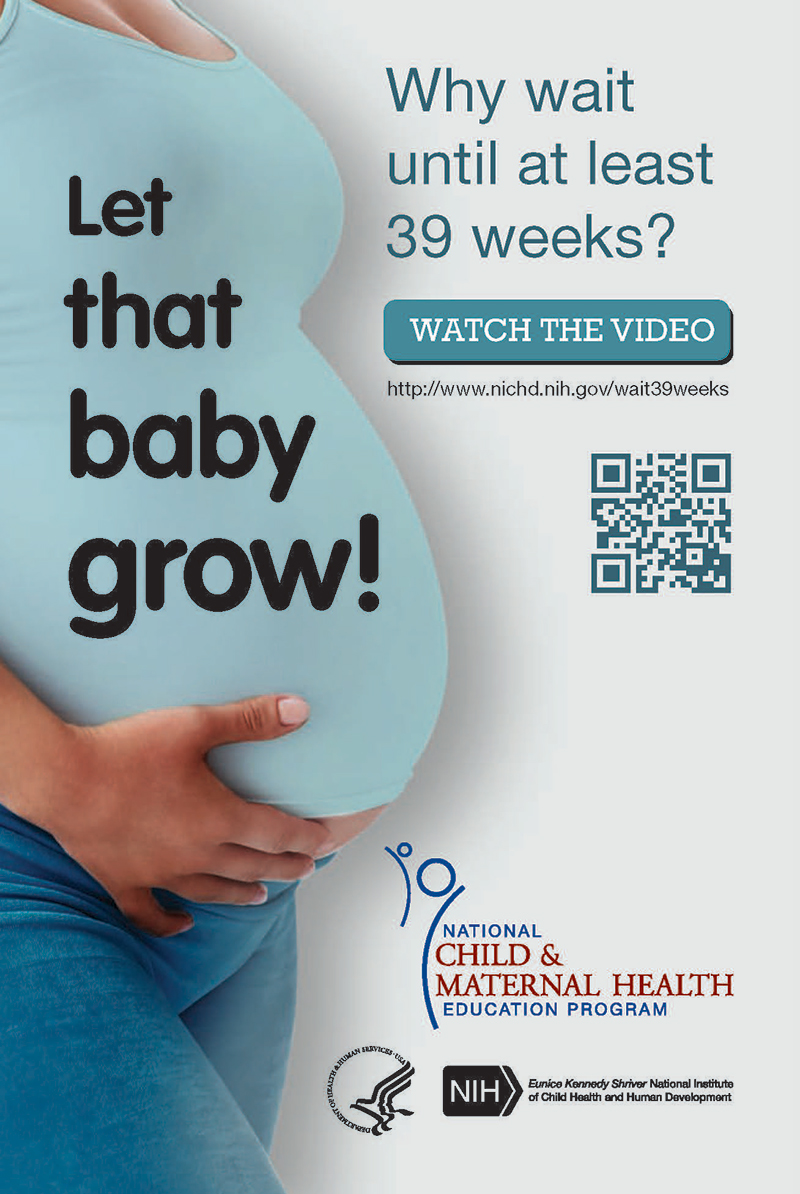Reducing Elective Deliveries Before 39 Weeks
The Is It Worth It? initiative launched in 2012 as the first effort of the NICHD National Child and Maternal Health Education Program (NCMHEP).
The initiative aimed to raise awareness about the risks of elective deliveries before 39 weeks of pregnancy. Between 1990 and 2006, the United States saw a 50% increase in deliveries at 37 weeks to 38 weeks of gestation.1 During that period, the rise in rates for elective inductions outpaced the medically indicated induction rates.2
Research3 shows that, in a healthy pregnancy, it is safest to allow the baby to remain in the womb until at least 39 weeks. Nonmedically indicated deliveries between 37 weeks and 39 weeks of gestation pose increased health risks for both the mother and the baby. Additional research findings indicate that delaying delivery until 39 weeks of pregnancy or later, if there is no medical reason to deliver earlier, is not associated with increased rates of stillbirths in the United States.
The NICHD retired the Is It Worth It? initiative in 2022. Although the information presented by the initiative is still accurate, shifts in medical practice and in terminology related to delivery make the information less relevant.
The American College of Obstetricians and Gynecologists offers information about elective cesarean delivery for providers 


 BACK TO TOP
BACK TO TOP